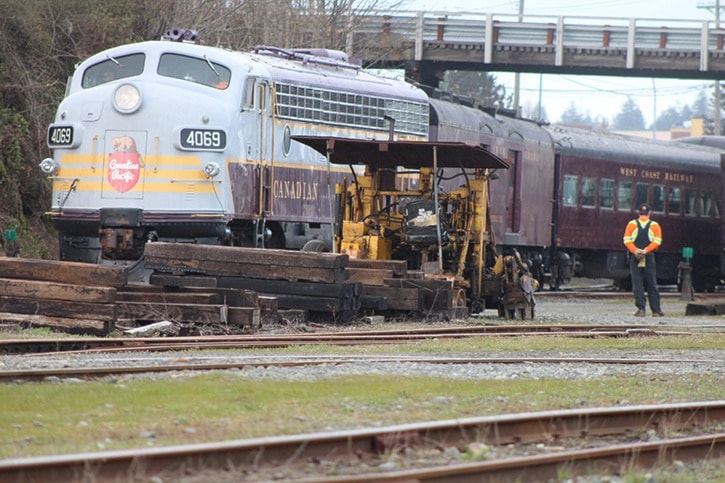On April 8, passenger rail returns to Vancouver Island in the form of a classic locomotive pulling four heritage rail cars on a series of tours in the Nanaimo area.
Celebrating the 130th birthday of Island rail, organizers had hoped the event would make a bold statement that its future is very much alive.
Instead, recent events have threatened to turn it into a funeral procession.
After five years of hard lobbying to obtain the support and co-operation of a variety of federal, provincial and business authorities to oversee a $20.9 million track restoration, the project seems on the brink of crumbling from within.
In late December, the Nanaimo-area Snaw-Naw-As band — one of 11 First Nations that originally partnered with five regional districts as the Island Corridor Foundation to purchase the line in 2003 — launched a lawsuit asking for the return of their portion of railway land because no trains were running.
Then, earlier this month, the Capital Regional District requested a formal financial and governance review of the ICF through the Association of Vancouver Island and Coastal Communities due to what it considered substandard management.
And what may have been the last spike came Tuesday night when the Regional District of Nanaimo decided it was pulling the nearly $1 million it had promised for the restoration project.
According to Island Corridor Foundation executive director Graham Bruce, the only thing previously preventing the track improvements that will relaunch passenger service from getting underway was the federal minister signing off on a promised $7.5 million grant.
Politicians in Nanaimo and Greater Victoria say their moves don’t spell the end of the line for Island rail. But with each parcel of restoration funding being contingent on every other partner bucking up as promised for this star-crossed project, they may have a hard time proving it.
There is also local government frustration over the way the restoration project — and the corridor itself — are being managed.
Fuelling municipal angst is the idea that communities are being unreasonably milked by an operation that they indirectly own.
Loquacious longtime Langford Mayor Stew Young’s problems with the non-profit ICF are twofold: he has questions with no answers, and fees with no service.
“You’ve got a corridor owned by the public that seems to have no transparency,” he said. “There’s a limit to what taxpayers will pay for the service they aren’t getting.”
Although ICF directors — like chairman and Nanaimo Mayor Bill McKay, and Duncan Mayor Phil Kent — typically come from member bodies, they are restricted from acting as representatives of those bodies or reporting directly back to those bodies due to conflict-of-interest laws.
Young is among a number of officials who don’t believe local government is getting answers to important questions about financial and policy matters.
According to a financial statement filed for 2014 and available on its website, the ICF holds about $340 million in assets. It paid expenses of $490,239 with money collected from donations, grants, rental income and fees from crossings, leases and other services.
The $109,000 collected from fees — which all affected municipalities pay — is a particular sticking point with Young. He has ordered Langford not to pay its annual bill of $35,000. He said the fee amounts are unnecessary in the absence of train activity.
“They’re making money on it without doing anything,” he said. “All of us are getting charged.”
Bruce is sensitive to the criticism the ICF isn’t doing anything. He said people tend to overlook the fact the foundation is a land owner in charge of of 651 heavily regulated hectares passing through a majority of Vancouver Island’s population centres, which means a lot of bureaucratic and maintenance work even when the trains aren’t running.
It operates with a staff of two and contracts Southern Rail to operate and maintain the line based on B.C. Safety Authority standards. Bruce said maintaining the track is cheaper than deactivating it.
“It’s a regulated environment. The entire line must be considered active even if there are no trains on it,” he said. “All the crossings have to be maintained. The option of not doing it means tearing up the track.”
